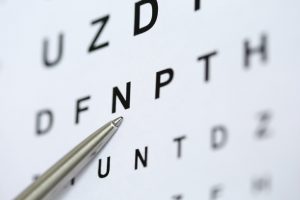 Vision loss can be brought on by stroke, and nearly one-third of patients will develop vision loss after a brain attack. The likelihood of experiencing vision loss after stroke depends on what part of the brain is affected. Although a complete vision restoration after stroke may not be possible, some level of vision may be brought back.
Vision loss can be brought on by stroke, and nearly one-third of patients will develop vision loss after a brain attack. The likelihood of experiencing vision loss after stroke depends on what part of the brain is affected. Although a complete vision restoration after stroke may not be possible, some level of vision may be brought back.
Blood vessels supplying blood and nutrients to the eyes run all over the brain. Even though a stroke commonly affects only one side of the brain, the risk of vision loss after stroke is still quite high.
Methods available to screen for post-stroke visual impairments
Advertisement
A study by the researchers at the University of Liverpool, U.K., found that there is a strong need for diagnostic methods to determine vision problems after stroke. With over 65 percent of stroke survivors living with visual impairment, it is striking that 45 percent of stroke units don’t assess vision.
Visual impairment can significantly reduce a person’s quality of life, preventing them from heading back to work and even contributing to depression.
The researchers found that the current diagnostic tools only measure stroke-related impairments, which means vision problems can be overlooked.
Kerry Hanna, the researcher, explained, “The sensitivity of those which screen for all impairments is significantly lowered when patients are unable to report their visual symptoms. Future research is required to develop a tool capable of assessing stroke patients which encompasses all potential visual deficits and can also be easily performed by both the patients and administered by healthcare professionals in order to ensure all stroke survivors with visual impairment are accurately identified and managed.”
Types of vision loss linked to stroke
 Hemianopia: This is a type of vision loss that affects half your field of vision in each eye. A patient may describe it as not being able to see out of one eye when, in fact, both eyes are affected.
Hemianopia: This is a type of vision loss that affects half your field of vision in each eye. A patient may describe it as not being able to see out of one eye when, in fact, both eyes are affected.
Quadrantanopia: This is the loss of either the upper or lower quarter of the visual field. It also affects both eyes. This type of vision loss after stroke can pose a risk to the safety of the patient, as they may be unable to see hazards.
Eye movement control: Because a stroke damages the nerves that are responsible for eye movement, you may be unable to move your eyes in certain positions, which can make activities like reading difficult. Impaired eye movement may also result in double vision or turned eyes. Some eye nerve damage causes the eyes to droop or the pupils to enlarge. Light sensitivity has also been noted in some patients.
Nystagmus: This is the unsteady movement of the eyes – up and down, left and right, or circular motion. Eyes are constantly appearing jittery. The condition can make walking difficult and lead to nausea.
Visual agnosia: This is a condition in which the patient has trouble recognizing familiar faces or objects.
Dry eyes: Problems with the nerves or eyelid muscles can lead to dry eyes.
Treatment options for vision loss after stroke
Unfortunately, majority of patients cannot recover their full vision after stroke, but it may be restored to some degree. Treatment for vision loss after stroke depends on the cause and what part of the brain is affected.
Advertisement
Vision loss after stroke is rarely corrected with glasses or contacts, because it results from the brain damage, rather than problem with the eye itself.
Some treatment methods include optical therapy, eye movement therapy, and visual restoration therapy. Your doctor will determine the best course of treatment for your vision loss after stroke based on your specific case.
Sources:
https://strokefoundation.com.au/en/About-Stroke/Help-after-stroke/Stroke-resources-and-fact-sheets/Vision-loss-after-stroke-fact-sheet
https://news.liverpool.ac.uk/2016/09/27/urgent-need-to-help-identify-visual-impairments-of-stroke-victims/
http://www.stroke.org/we-can-help/survivors/stroke-recovery/post-stroke-conditions/physical/vision
